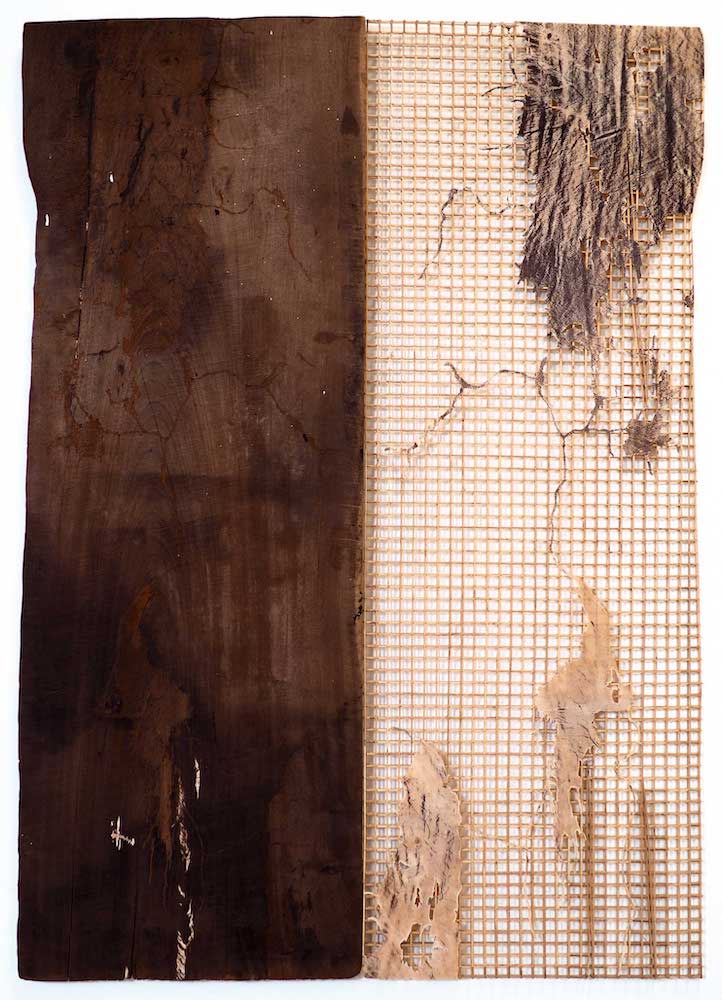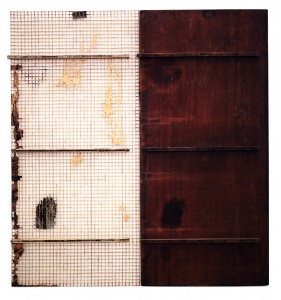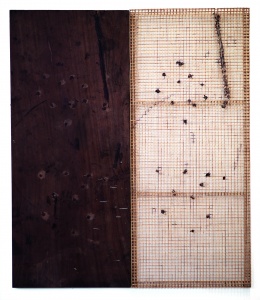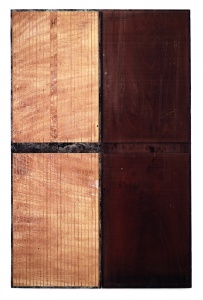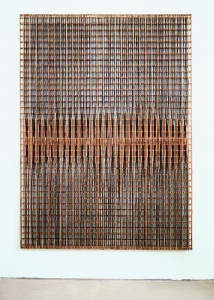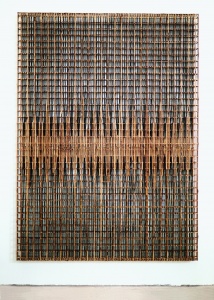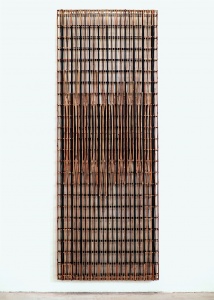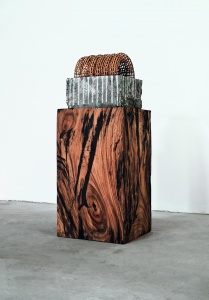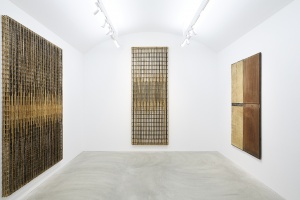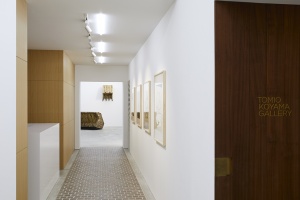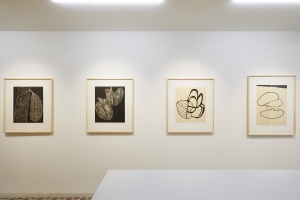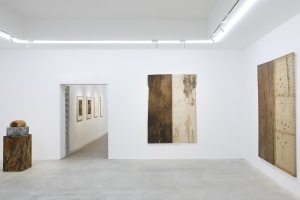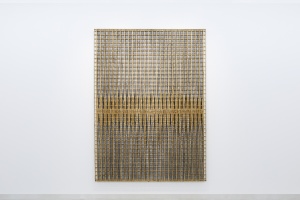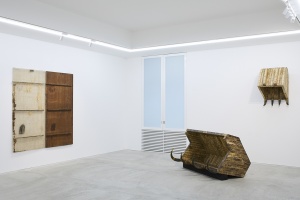Tomio Koyama Gallery is pleased to present “RECLAIM,” an exhibition with Sopheap Pich. Sopheap Pich is recognized as one of the leading artists of Cambodian contemporary art. Engaging in a practice that serves to express a heartfelt respect and passion for handcrafts and materials rooted in Cambodia through sophisticated contemporary structures, he has presented works internationally, holding numerous solo shows and taking part in prominent exhibitions throughout the world.
In Japan he participated in the Mori Art Museum’s 2017 group exhibition “Sunshower: Contemporary Art from Southeast Asia 1980s to Now” (concurrently held at The National Art Center, Tokyo) and received much acclaim for his work that was also featured on the cover of the exhibition catalog. Also taking part in the “VIVA ARTE VIVA” exhibition at the 57th Venice Biennale that same year, as well as presenting “desire line,” his first solo exhibition in Japan at Tomio Koyama Gallery, Pich has continued to actively further his career and international reputation as an artist.
This exhibition marks the artist’s second solo exhibition in Japan, and features a selection of his highly anticipated new works.
【About Sopheap Pich and his Works –Thoughts on Cambodia】
Sopheap Pich was born in Cambodia in 1971, and grew up under the harsh and tragic Khmer Rouge regime. For a period of five years from 1979, his family stayed in refugee camps along the border of Thailand to escape from political instability. During that time Pich participated in an art school run by NGOs and began to develop an interest in painting. His family migrated to the United States in 1984. In 1990 he entered the University of Massachusetts to study medicine at the wishes of his father, yet later transferred to the Department of Art, graduating in 1995. Subsequently he received an MFA in painting from the School of the Art Institute of Chicago in 1999.
While engaging in his artistic practice after graduating from university, Pich however found himself struggling with the expressions of his work. Despite the tragic experiences he had undergone, he had in fact yearned for the scenery of his home country. Finally in 2002 he returned to Cambodia, and made the decision to go back to life in a rural village.
The people and things that Pich encountered upon his return had served as a significant influence. He found himself surrounded entirely by nature. The outhouses in rural areas were woven with bamboo and covered with a mixture of soil, bamboo and rice straw. All of such were handmade, and appeared extremely beautiful.
Eventually Pich began to use materials rooted in local regions such as bamboo, rattan, wire, and beeswax to produce sculptural works that were both organic and geometrical, drawing inspiration from various trees and flowers that fascinated him, aspects of the human anatomy he had studied, and urban structures. Made to harbor a certain lightness and air of transparency due to the rough manner in which they are constructed, his works give rise to an overwhelming sense of volume through their sophisticated and functional structures, enabling the viewers to feel as if the entire space is replete with energy. As one of his representative means of expression, since 2011 he has also continued to produce reliefs, seemingly minimalistic in nature, featuring grids.
Pich states as follows with regards to his own practice:
“All of my experiences in Cambodia were wonderful, sad, painful, and beautiful. I wish to convey these through my work. I want to show not only the beauty of the surface, but also the process of creating the work. I quite enjoy the repeated process of cutting thin strips from large bamboo stalks, and tying them together with wires. People often regard my work as being created using traditional methods, yet I feel that my technique is in fact contemporary.”
(“Dedicating one’s entire body and spirit to art, looking for light and truth in the darkness” Interview with: Sopheap Pich, Art Collectors, December 2017 issue)
Pich’s three-dimensional works have continued to captivate viewers around the world, and has been featured in numerous museum exhibitions and biennials such as Documenta 13 (2012), as well as his solo exhibitions at the Metropolitan Museum of Art (New York, 2013) and the Indianapolis Museum of Art (2014). Continuing to receive international acclaim within the contemporary art world, his works are housed in the major collections of museums including the Metropolitan Museum of Art and Solomon R. Guggenheim Museum (New York), Centre Georges Pompidou (Paris), M+ (Hong Kong), Singapore Art Museum, and the San Francisco Museum of Modern Art. In Japan, his works are included in the collections of The Museum of Contemporary Art Tokyo and Mori Art Museum.
【About the New Works in the Exhibition – The “Things” that Exist through Cambodia’s Current Circumstances】
This exhibition presents a selection of new reliefs and three-dimensional works that utilize materials such as wood, metal, and cowhide taken from antique furniture which the artist has collected from various parts of Cambodia over the past seven years.
The reliefs introduced on this occasion have two structures within a single work, featuring wood taken from antique furniture on one side, and a bamboo-woven grid that reproduces the structure of that piece of wood on the other. The seams, scratches, and countless traces of holes characteristic of antiques, are expressed through the use of metal and cowhide. As a result, both the passage of time and traces in the wood come to manifest within the work in a new form –the two structures seemingly facing each other beyond time and space while projecting each other’s existence.
In the background of these works are Pich’s concerns regarding timber in present day Cambodia. In recent years, the numbers of trees in Cambodia have continued to decrease due to being smuggled into countries such as China, Vietnam, and Thailand. Furthermore, while old Cambodian artworks have all been lost as a result of war, old furniture is not considered as important, and thus can still be found within the country. Through instilling artistic value in wood taken from antique furniture, Pich strips away their original use, visually giving form to his ideas and thoughts on a lost culture within his work.
The large sculptural work “Animal,” measuring 2 × 2.5 meters, is made from buffalo and cow horns, leather, bamboo, rattan, wood, and metal; at once reminiscent of a bulldozer-like machine of sorts or a mammoth animal creature. Embedded within this work is a two-fold metaphor –the fact that Cambodia’s agriculture of current is yet to be modernized, with cows and horses serving as the main dynamic force instead of “machines,” while globally speaking, it can also be regarded that animals are no longer needed since “machines” have come to replace the work of “animals.”
【The Social Nature of Pich’s Work, the Role and Autonomy of Art that “Saves the Soul”】
Amidst such circumstances Pich himself owns 40 hectares of land where he plants trees and coconuts, also building bridges over rivers, and engaging in agriculture by setting up irrigation, thus working to protect Cambodian land by possessing his own land. Pich’s practice extends beyond the realm of art, reflecting his resolve and efforts of taking responsibility for the state and future of Cambodia.
Mami Kataoka, Director and Chief Curator of the Mori Art Museum, has written as follows in a text contributed to this exhibition’s catalog:
“Rather, Pich’s fundamental core lies within the histories and memories recounted by these materials, or in the existences of these materials themselves: materials that merely exist, even as they accept a myriad of temporal shifts and changes in terms of politics, economics, society, and culture. As noted in the excerpt from Yanagi quoted at the beginning of this essay, these materials complain to nobody: neither do they get angry. There is no trace anywhere of their devotion or attachment: this is expressed through a stance that seems to be concerned with nothing. They have no attachment to themselves; they merely exist, there. The vastness of nature teaches us this detachment. Basing himself in the country of Cambodia where he was born, Pich lives there by giving himself over to nature, while engaging in agriculture — a kind of politics, it seems, that allows him to be who he is. By confronting the works that emerge out of this situation, then, perhaps we will be prompted to train our ears to the voices of these trees and stones before us, and learn something of their disinterestedness. ”
(Mami Kataoka, “The Insentience of Trees and Stones –The Politics of Sopheap Pich,” Sopheap Pich RECLAIM, Tomio Koyama Gallery, 2019)
Pich himself has also spoken as follows:
“The world now is filled with darkness. What I am interested in, is finding the light within this darkness. Art is a means for fighting against the darkness, confronting sadness, and saving the soul. I believe that the artist is in a sense like a doctor that helps to save the mind.”
(“Dedicating one’s entire body and spirit to art, looking for light and truth in the darkness” Interview with: Sopheap Pich, Art Collectors, December 2017 issue)
Pich’s work takes into account issues of indigenousness and contemporaneity, as well as the times and the background surrounding the land, while also reflecting upon the time that the materials harbor. Through the medium of art he perhaps serves to convey to people an essential world of joy, freedom, and possibility of expression. This indeed could be regarded as the very reason for Pich’s work receiving high international acclaim and continuing to fascinate viewers across the world.
—————————————————————————————–
For press inquiries, please contact:
press@tomiokoyamagallery.com (Makiko Okado)
—————————————————————————————–

